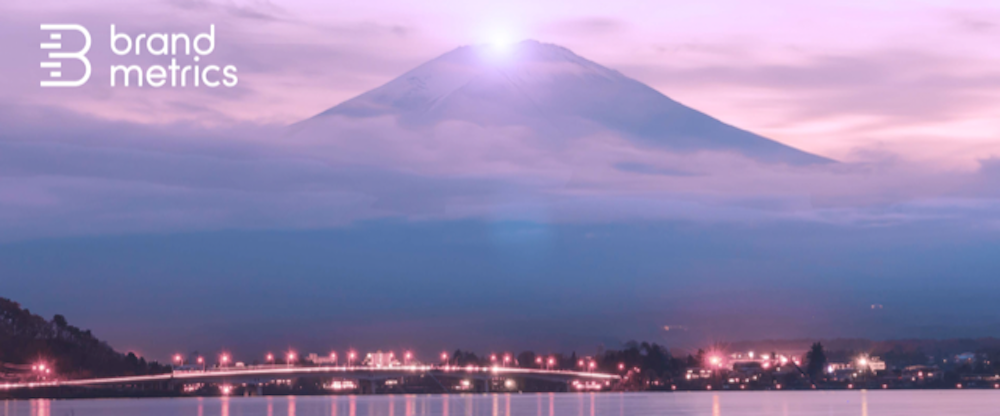How major publishers are driving revenue with brand lift measurement

While many advertisers are back to spending money in Q4, many are also continuing to be very cautious with their budgets. And some haven’t committed spend for 2021 at all. Now as Google Chrome’s sunset of third-party cookies promises to weaken traditional insight tools, many publishers are looking for new data-led strategies to entice agencies and clients to bring them next year’s business.
Brand lift measurement — that is, campaign effectiveness measures that include brand awareness, consideration, preference and action intent — can form part of the solution, especially if it’s cookie-free, automated and delivered at scale. For many major publishers and broadcasters, effectiveness measurement has now become crucial to unlocking advertiser budgets. Here’s why several have made strategic choices to invest in brand lift measurement, and how the investments have paid off.
Can marketers measure brand lift on a 90 percent opted-out audience?
The cookieless future is already a reality for Ster, the exclusive sales house for the Dutch national public broadcaster NPO. Due to a strict interpretation of GDPR, Ster made user tracking opt-out by default, resulting in a 90 percent opt-out rate. Ster has since ceased all advertising cookie usage, making performance measures such as post-view, plus running any form of programmatic activity, extremely difficult.
With standard performance metrics largely removed from the equation, Ster could trace the direct revenue generated by providing brand lift measurements to advertisers. In the second half of 2020, Ster saw 30 percent growth in digital display campaigns, half of which it directly attributes to adding brand lift measurement to every pitch.
Ster also set a minimum budget threshold for campaigns to qualify for brand lift measurements, resulting in a 45 percent increase in average order value for H2 versus H1. Some advertisers even quadrupled their average campaign spend. “Looking forward to next year,” said Tom Van Bentheim, manager of digital strategy, operations and technology at Ster, “there are conversations with some of the big agencies, where all campaigns will include brand lift measurement as standard.”
How to measure small campaigns, and thousands of them
Local news publishers typically deploy smaller campaigns, which are harder to measure. Not only that, they tend to run these campaigns in huge numbers, which makes measurement even more difficult. JPIMedia, one of the UK’s largest news organizations, ran more than 2,000 directly-sold campaigns in the past year – up to 300 per month. In addition, its clients are predominantly SMEs. As a result, average campaign impressions and spend tend to be modest, which makes measurement more challenging.
With Facebook as a key competitor, JPIMedia made the strategic choice to measure brand lift at scale. The publisher efficiently ran brand awareness, consideration, preference and action intent metrics across most campaigns. Now, a year and a half after beginning to take this approach, JPIMedia has seen 55 percent year-on-year growth in average direct-sold display campaign impressions for September 2020. Next year, it is looking to drive a further 70 percent increase.
Brand lift data has also informed what JPIMedia Research Director Simon Baty called “a positive feedback loop on campaign outcomes.” In other words, the publisher is now better able to apply insights to improve future results for its customers. Achieving an initial average brand lift improvement of 11.6 percent, in recent months this number has increased to 15–16 percent, even reaching 21 percent in October.
Next steps: demonstrate a powerful impact (beyond clicks)
The Ozone Project is a premium advertising platform, and its members include some of the leading publishers in the UK, including News UK, the Telegraph, the Guardian, Reach, Bauer Media, DC Thomson and Time Out.
According to Bryan Scott, The Ozone Project’s marketing director, “Brand lift allows us to measure and put into words the powerful impact our environments can deliver for our customers, in addition to the measures they have in place elsewhere.”
Ozone’s average campaign brand lift last year was around 21 percent higher than the Brand Metrics platform global benchmark. “Today, the agencies of course still have their benchmarks around clickthrough rates (CTR). But what [the brand lift approach] has done is to help transform the limited thinking around what the value added of a digital campaign actually is.”
Clients need more data to support their buying decisions
South Africa’s largest publisher, Media24, leveraged brand lift metrics to take post-campaign reporting to a new level, “one that is not simply tick or cross, but able to diagnose various outcomes,” said Gareth Lloyd, head of data and analytics at 24.com. Recently, 24.com used the brand lift metrics to measure a series of campaigns with the region’s top advertisers in an effort to gauge the branding effects of mobile. With 80 percent of its audience on mobile, it was a strategic priority for mobile spend to reflect time spent. “Adding brand lift measurement has given a whole new dimension to our reporting; clients love it, and it brings them back for more,” said Lloyd.
The picture these and other major publishers paint is clear. In a shifting market, focusing on brand lift measurement is bringing them stability — and even driving revenue directly. As advertisers become more familiar with brand lift measurement — and even start to require it — publishers are beginning to deliver brand lift as an always-on metric. In doing so, they are helping to reinforce the unique strengths of premium advertising environments.
More from Digiday

Publishers revamp their newsletter offerings to engage audiences amid threat of AI and declining referral traffic
Publishers like Axios, Eater, the Guardian, theSkimm and Snopes are either growing or revamping their newsletter offerings to engage audiences as a wave of generative AI advancements increases the need for original content and referral traffic declines push publishers to find alternative ways to reach readers.

WTF is the CMA — the Competition and Markets Authority
Why does the CMA’s opinion on Google’s Privacy Sandbox matter so much? Stick around to uncover why.

Marketing Briefing: How the ‘proliferation of boycotting’ has marketers working understand the real harm of brand blockades
While the reasons for the boycotts vary, there’s a recognition among marketers now that a brand boycott could happen regardless of their efforts – and for reasons outside of marketing and advertising – that will need to be dealt with.





